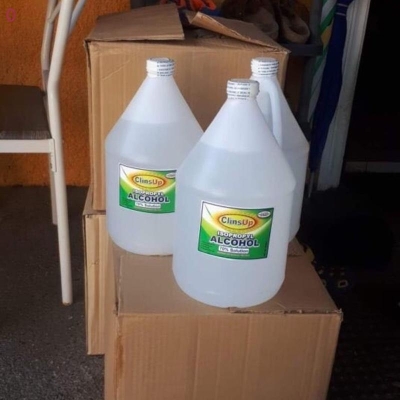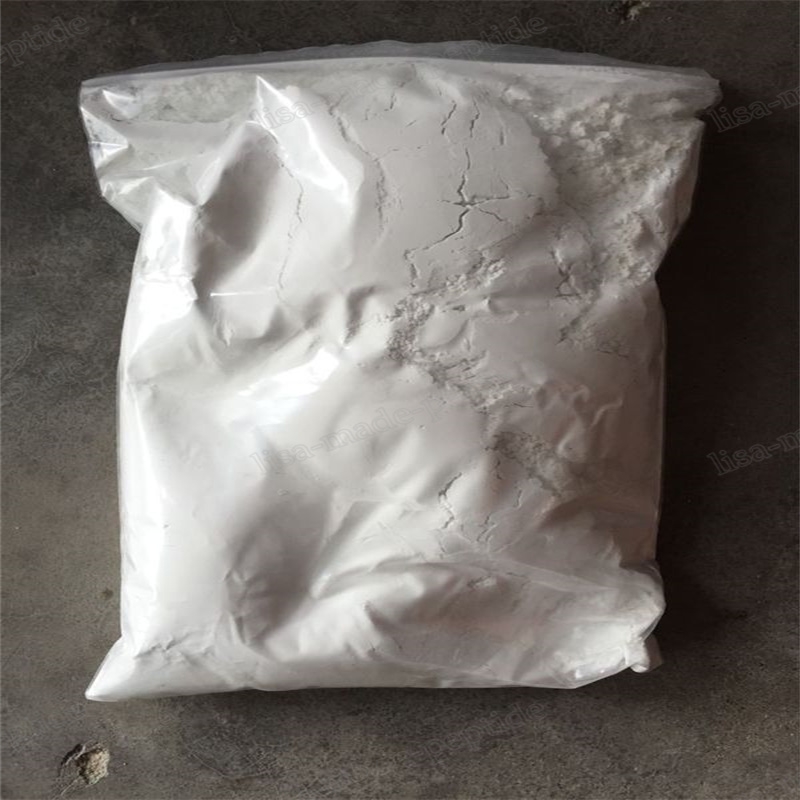-
Categories
-
Pharmaceutical Intermediates
-
Active Pharmaceutical Ingredients
-
Food Additives
- Industrial Coatings
- Agrochemicals
- Dyes and Pigments
- Surfactant
- Flavors and Fragrances
- Chemical Reagents
- Catalyst and Auxiliary
- Natural Products
- Inorganic Chemistry
-
Organic Chemistry
-
Biochemical Engineering
- Analytical Chemistry
-
Cosmetic Ingredient
- Water Treatment Chemical
-
Pharmaceutical Intermediates
Promotion
ECHEMI Mall
Wholesale
Weekly Price
Exhibition
News
-
Trade Service
[ Policies and Regulations of Chemical Machinery Equipment Network ] In order to implement the "Regulations on the Management of Pollution Discharge Permits", improve the technical support system for pollutant discharge permits, support the development of refined and informatized management of fixed pollution sources, and guide and standardize the management of the QR code identification of pollutant discharge outlets of pollutants.
Work, the Ministry of Ecology and Environment organized the drafting of the "Technical Specifications for the Two-dimensional Code Identification of Pollutant Discharge Outlets of Pollutant Discharge Units (Draft for Solicitation of Comments)" environmental protection standards
.
According to the "Work Rules for the Establishment and Revision of National Ecological and Environmental Standards", opinions are now publicly solicited
.
Chemical Machinery and Equipment Network Policies and Regulations Chemical Machinery and EquipmentWork, the Ministry of Ecology and Environment organized the drafting of the "Technical Specifications for the Two-dimensional Code Identification of Pollutant Discharge Outlets of Pollutant Discharge Units (Draft for Solicitation of Comments)" environmental protection standards
.
According to the "Work Rules for the Establishment and Revision of National Ecological and Environmental Standards", opinions are now publicly solicited
.
The pollutant discharge permit system is the core system of environmental supervision of fixed pollution sources and an important institutional guarantee for the construction of a modern environmental governance system
.
In the past, law enforcement inspections were often aimed at special inspections of waste water and exhaust gas.
Now, “one company, one certificate” and comprehensive law enforcement are implemented, and environmental law enforcement inspections of fixed pollution sources are concentrated on the supervision of pollution discharge permits.
Pollution permits have become the basis for law enforcement by regulatory agencies
.
Pollution discharge permit management is highly professional and covers a wide range of comprehensive content.
The relationship between pollutant generation links, treatment measures, and discharge outlets is intricate.
The connection between the pollutant discharge permit system and the environmental monitoring system, total control system, environmental inspection and law enforcement and other systems is in its infancy , The local ecological and environmental authorities lack professional talents, and are facing serious shortages in the issuance of pollutant discharge permits and post-licensing supervision
.
.
In the past, law enforcement inspections were often aimed at special inspections of waste water and exhaust gas.
Now, “one company, one certificate” and comprehensive law enforcement are implemented, and environmental law enforcement inspections of fixed pollution sources are concentrated on the supervision of pollution discharge permits.
Pollution permits have become the basis for law enforcement by regulatory agencies
.
Pollution discharge permit management is highly professional and covers a wide range of comprehensive content.
The relationship between pollutant generation links, treatment measures, and discharge outlets is intricate.
The connection between the pollutant discharge permit system and the environmental monitoring system, total control system, environmental inspection and law enforcement and other systems is in its infancy , The local ecological and environmental authorities lack professional talents, and are facing serious shortages in the issuance of pollutant discharge permits and post-licensing supervision
.
The two-dimensional code information management of pollutant discharge outlets is the gradual deepening of environmental supervision of pollutant discharge units to the supervision of each specific discharge outlet, from the control of major pollutants to the coordinated control of multiple pollutants, and from the control of pollutant concentration to pollution The need for dual control of the concentration of pollutants and the total amount of pollutant discharge
.
In the process of supervision and law enforcement, the use of the QR code information of the discharge outlet can assist in the analysis and compliance inspection of the whole process of pollutant production, governance and discharge.
Therefore, the application of the QR code identification of the pollutant discharge outlet is to strengthen the supervision after the discharge permit and promote the public Participate in supervision and management, provide important information services, and provide an important foundation for promoting the realization of fine management of fixed pollution sources and full-process management
.
In the process of supervision and law enforcement, the use of the QR code information of the discharge outlet can assist in the analysis and compliance inspection of the whole process of pollutant production, governance and discharge.
Therefore, the application of the QR code identification of the pollutant discharge outlet is to strengthen the supervision after the discharge permit and promote the public Participate in supervision and management, provide important information services, and provide an important foundation for promoting the realization of fine management of fixed pollution sources and full-process management
In order to implement the "Environmental Protection Law of the People's Republic of China" and "Pollution Permit Management Regulations" and other laws and regulations, improve the technical support system for pollutant permits, strengthen the information supervision and management of the competent department of ecological environment, give full play to the role of public supervision, and standardize and guide pollutant discharge units Carry out the management of the QR code identification of pollutant discharge outlets and formulate this standard
.
.
This standard is issued for the first time
.
This standard specifies the basic principles, data structure, data content and management requirements of the two-dimensional code identification of pollutant discharge outlets of pollutant discharge units
.
.
This standard specifies the basic principles, data structure, data content and management requirements of the two-dimensional code identification of pollutant discharge outlets of pollutant discharge units
.
The normative references of this standard include: GB/T 12905 barcode terminology; GB/T 18284 quick response matrix code; GB/T 23704 two-dimensional barcode symbol printing quality inspection; HJ 608 emission unit coding rules; RFC 1738 uniform resource positioning Token (Uniform Resource Locators (URL)); RFC 1808 Relative Uniform Resource Locators; RFC 6749 OAuth Access Tokens (OAuth Access Tokens; UTC 1002 QR code application management requirements; "Fixed pollution source pollution discharge permit classification Management List" (Order No.
11 of the Ministry of Ecology and Environment)
.
11 of the Ministry of Ecology and Environment)
.
Air pollutant discharge port:
a) Basic information of the air pollutant discharge outlets, including the name of the discharge outlet, the number of the discharge outlet, and the type of discharge outlet (main discharge outlet, general discharge outlet, special discharge outlet, etc.
)
.
b) the atmospheric vent contaminants license management requirements, including the type of pollutant emissions, emissions standards name, license emission concentration, permit emission rate, allowable emissions, monitoring technology, monitoring frequency inferior
.
c) Requirements for prohibiting or restricting the discharge of air pollutants during special periods
.
)
.
b) the atmospheric vent contaminants license management requirements, including the type of pollutant emissions, emissions standards name, license emission concentration, permit emission rate, allowable emissions, monitoring technology, monitoring frequency inferior
.
c) Requirements for prohibiting or restricting the discharge of air pollutants during special periods
.
Water pollutant discharge outlet:
a) Information on direct discharge outlets of water pollutants, including discharge outlet name, discharge outlet number, discharge outlet type (total discharge outlet, workshop or production facility discharge outlet, other discharge outlets), discharge destination, discharge rule, discharge period, acceptance The name of the water body, the use function of the receiving water body, the location of the receiving water body (geographical coordinates-longitude, geographic coordinates-latitude), the name of the sewage outlet of the river, the number of the sewage outlet of the river, the approval document number of the sewage outlet of the river (if any) , the type of pollutant emissions, emissions standards name, license emission concentration, allowable emissions, monitoring technology, monitoring frequency inferior
.
b) Indirect discharge port information of water pollutants, including discharge port number, discharge port type (total discharge port, workshop or facility discharge port, other discharge ports), discharge destination, discharge rule, discharge period, name of receiving sewage treatment plant, the type of pollutant emissions, emission concentration wastewater treatment commission agreement / contract, national or local standards for pollutant discharge concentration limits, pollutant discharge standard name, license emission concentration, permit emissions monitoring technology, monitoring frequency, etc
.
c) Rainwater discharge port information, including discharge port number, discharge destination, discharge law, discharge period, receiving water body name, receiving water body use function, and receiving water body location (geographical coordinates-longitude, geographic coordinates-latitude), etc.
.
.
b) Indirect discharge port information of water pollutants, including discharge port number, discharge port type (total discharge port, workshop or facility discharge port, other discharge ports), discharge destination, discharge rule, discharge period, name of receiving sewage treatment plant, the type of pollutant emissions, emission concentration wastewater treatment commission agreement / contract, national or local standards for pollutant discharge concentration limits, pollutant discharge standard name, license emission concentration, permit emissions monitoring technology, monitoring frequency, etc
.
c) Rainwater discharge port information, including discharge port number, discharge destination, discharge law, discharge period, receiving water body name, receiving water body use function, and receiving water body location (geographical coordinates-longitude, geographic coordinates-latitude), etc.
.
Requirements for self-monitoring of discharge outlets:
Self discharge port monitoring requirements including whether automatic monitoring network, automatic monitoring equipment name, automatic monitoring facility installation location, number and sampling method of sampling points manual monitoring, fault monitoring facilities in the automatic manual monitoring requirements
.
Monitoring instrument .
Pollutant discharge information at the discharge outlet:
a) Manual monitoring information, including monitoring time, name of testing organization, pollutant type, pollutant concentration, standard limit, compliance status, over-standard multiples, etc.
; b) Automatic exhaust gas monitoring information, including monitoring pollutant types and pollutant concentration hours Average value, standard limit, compliance status, multiples of exceeding standards, etc.
; c) Automatic wastewater monitoring information, including monitoring pollutant types, daily average values of pollutant concentrations, standard limits, compliance status, multiples of exceeding standards, etc.
; d) Related to discharge outlets The amount of pollutants discharged; e) the construction and operation of pollution prevention facilities; f) the location of the sewage into the municipal drainage network, the discharge method and other information
.
; b) Automatic exhaust gas monitoring information, including monitoring pollutant types and pollutant concentration hours Average value, standard limit, compliance status, multiples of exceeding standards, etc.
; c) Automatic wastewater monitoring information, including monitoring pollutant types, daily average values of pollutant concentrations, standard limits, compliance status, multiples of exceeding standards, etc.
; d) Related to discharge outlets The amount of pollutants discharged; e) the construction and operation of pollution prevention facilities; f) the location of the sewage into the municipal drainage network, the discharge method and other information
.
This standard applies to the management, application and service of the two-dimensional code identification of the air pollutant and water pollutant discharge outlets of the pollutant discharge units that implement the key management and simplified management of pollutant discharge permits
.
.
The two-dimensional code identification of air pollutant and water pollutant discharge outlets of pollutant discharging units that are not specified in the "Registration and Management of Pollutant Discharge Permits for Fixed Sources of Pollutant Discharge Permits" may refer to this standard
.
The two-dimensional code identification of solid waste storage/disposal facilities may refer to this standard
.
.
The two-dimensional code identification of solid waste storage/disposal facilities may refer to this standard
.
Original title: "Technical Specification for the Two-dimensional Code Identification of Pollutant Discharge Outlets of Pollutant Discharge Units" Environmental Standards Solicited Comments







